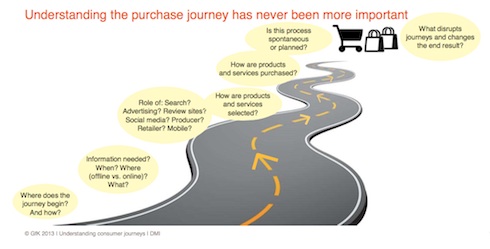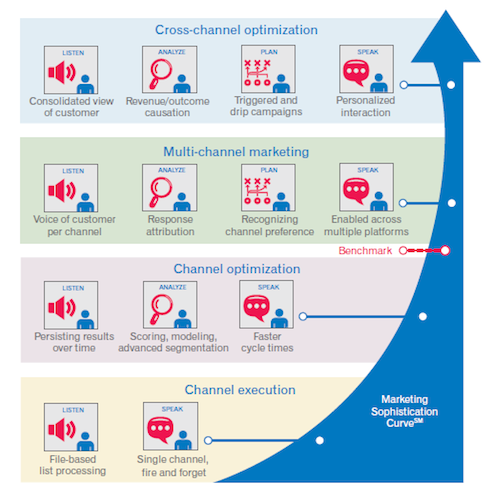By adaptive - January 15th, 2014
Social media has shown all marketers that they now need to function over multiple channels in order to reach their target audiences, but how do corporations move to this multifaceted approach?
2014 is set to become the year that mobile commerce takes hold and is expected to eclipse even the might that e-commerce has wielded over the last few years. For marketers, the move to mobile platforms means rethinking their approach to every marketing campaign, and how social media forms the bedrock onto which all other collateral is built.
In their latest report Experian Marketing Services concluded: “This year’s most important — and challenging — imperative is for marketers to truly demonstrate their customer obsession by synthesizing disparate data trails and orchestrating thoughtful, meaningful and coordinated experiences as their customers move seamlessly in and out of channels. Being able to respond to these dynamic interactions in real time across all relevant channels is the foundation of cross-channel marketing and is a critical component to building long-term advocacy.”
Consumers want to be appreciated by the brands they covet. The digital journey that consumers now take is complex and clearly has social media as a major component. Marketers that continue to silo their activity will loose sight of these journeys and more so, loose any chance of high levels of engagement.
And with the burgeoning use of mobile devices, these platforms and the channels they deliver to corporations must be cultivated. With consumers now using tablets for over four hours a week browsing the Internet, linking social media campaigns to this behaviour is a commercial imperative all corporations should embrace immediately.
Social media also lends itself superbly to the changing path that consumers now use to reach the brands they want to buy from. Where once the sales funnel was linear, today this has fragmented with a number of roads leading to the brand owners website. Here, leveraging the propensity of tablet and smartphone users to be lead by their social media networks; creates an opportunity for all digital marketers to cultivate several consumer touch points all of which could result in a conversion. At no other time has this level of flexibility been available to brands enabling them to make these personal connections with their consumers.
Customer connections
Becoming more customer and not just message focused is shifting across marketing teams. Continued integration is the key to success in an environment that is increasingly lead by social media activity. Multichannel marketing should now be the focus of all corporations if they are to tap into the highly lucrative m-commerce channel.
Experian continued: “Despite the favourable move from siloed to integrated teams, the customer continues to receive a stream of often confusing, and sometimes competing, messages from a single brand. For example, a customer who is a Facebook fan of an appealing new little European car decides after much thought that it’s her time to buy. She builds her car on the Web, finds a dealer, picks up her car and is in a state of “new car ecstasy” until she gets an email on her mobile device offering her $500 to take a test drive of the car she bought three weeks ago.
“Why does this happen? Certainly the chief marketing officer wouldn’t be happy about wasted dollars and an annoyed customer, who is now slightly less a fan. There certainly is no lack of analytics, technology, agencies and service providers, so it’s not a capability gap. The fact is, this happens over and over again because the customer is still not at the centre of marketing planning, and marketing organizations can’t quite seem to make the leap to a complete customer focus.”
As consumers become brand owners in their own right, and with technology in their hands on a 24/7 basis, corporations need to appreciate the power that these groups now have. Brands are certainly much better at developing their messages over a number of social channels, but much more could be done. The coordination of the marketing messages that are transmitted and then shared must have cohesion or brands run the risk of confusing their audiences, which is commercial suicide.
Marketers that want to assess their current position on the integration and cross-channel message trajectory can take the Marketing Sophistication Curve survey.
The results that your corporation has after taking this survey might be surprising, yet are a call to action for all organisations that need to quickly understand the hyper-connected and mobile consumer. Today the best ‘channel’ is a misnomer, as a multifaceted approach is needed by all marketers to reach their intended audiences.
Next Reads
June 2014, New York
Become a social business: For superior marketing response, sharper corporate decision-making, enhanced innovation and a happier, more loyal customer
Brochure Programme

